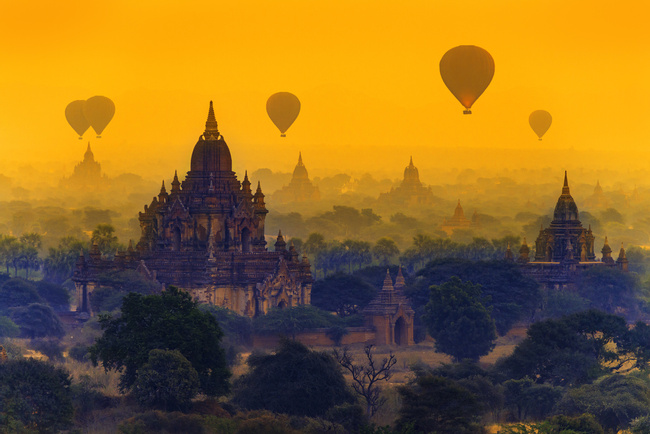- Travel Guides
Art and Literature in Myanmar
For many centuries, the artists and craftsmen of Myanmar have poured their talent into religious art. You’ll see Buddha and Buddhist iconography everywhere you look. The government limits freedom of expression here, but that oppresion doesn't limit the passion these artists express through their craft.

Religious Art
Pagodas have decorations that are specific to either the region or the century in which they were built — from the red-bricked temples of Bagan, to the golden pagodas of Yangon, to the elaborate archways surrounding the Mahamuni Temple in Mandalay. Nowhere is the building style more distinct than in the ancient Arakan capital of Mrauk U, which for most of its history remained independent from Burmese rule. Temples and pagodas here come in a particular shade of grey, and some have fortress-like designs.
Myanmar’s temples serve as reminders of its scattered kingdoms. When ancient kings built temples, they did so in an attempt to outdo their predecessor's creations. History sees this competitive spirit not just between dynasties, but also within families. For instance, Arakan King Min Bar, known as King Dikkha, built his Koe-thaung Temple in Mrauk U to house 90,000 Buddhas. He chose this number so his temple could have 10,000 more than his father's Shitthaung Temple, which housed only 80,000 Buddhas.
Nowadays, craftsmen ply their trade making decorative pieces. On strolls through markets all over the country, you can see white marble statues of Buddha, fine teak carvings, bronze cast figures, and razor-thin gold leaf packets. You can read about Myanmar’s artisans in our Myanmar Handicraft Guide.
Colonial Architecture
Signs of British colonialism remain visible in the architecture of numerous buildings in downtown Yangon. Since Myanmar's independence from the British Empire in 1948, the lack of economic development in the country has allowed these nineteenth and twentieth century buildings to remain unchanged.
Today, many refurbished buildings have regained their stunning appearance. City Hall has a delicate lavender-and-white façade, and there’s a courthouse with Queen Anne-style architecture. The vast majority of buildings, however, have fallen into disrepair over the decades. While walking the streets of downtown Yangon, the dilapidated facades are still fascinating reminders of a not-too-distant time in Myanmar's history.
Literature
During its colonial heyday as a colony of the British Empire, many famous artists of the time found themselves drawn by the country’s mystique. Authors Aldous Huxley, George Orwell, Rudyard Kipling, and HG Wells wrote about their travels in Myanmar.
Reading is still a popular pastime in Myanmar, and Pansodan Road in Yangon is known for its second-hand bookstores. Inside these shops, you can find many well-loved books, many of them in English, leftover from the not-too-distant British Empire. Journal Kyaw Ma Ma Lay is Myanmar’s most influential 20th century author, and one of the few whose work have been translated into English. One of her most famous works is a biography of her journalist husband, called A Man Like Him. See if you can find a copy in the stacks of books, among tattered copies of 1984 and A Brave New world.
It's more than just having a good time or visiting beautiful places (although that's absolutely a part of it!), it's about being part of a unique experience that stays with you.



